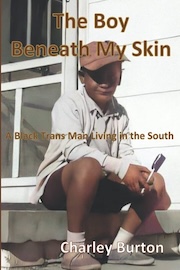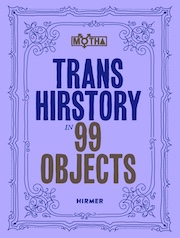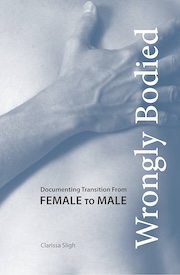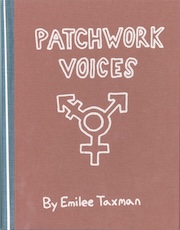Cecelia Parks, Undergraduate Student Success Librarian; Anne Causey, Reference Librarian; and Kiowa Hammons, Director of Copyright & Scholarly Communication Services, recommend nine books and films exploring the history, present, and future of trans people.
See the full list in Virgo, plus a few books that did not make the final cut!
 “Fair Play: How Sports Shape the Gender Debates” by Katie Barnes (St. Martin’s Press, 2023)
“Fair Play: How Sports Shape the Gender Debates” by Katie Barnes (St. Martin’s Press, 2023)
Trans people’s participation in sports is an especially contentious subject despite the small numbers of trans people playing sports at a high level, but the issue is often debated without sufficient knowledge or evidence. In “Fair Play,” sports journalist Barnes examines the history of women’s sports and questions what it means to separate sports by gender and who makes the decisions about gender-based participation. This book provides an evidence-based, well-reasoned argument about women’s sports and trans athletes in a time of shifting social norms around gender.
 “The Boy Beneath My Skin: A Black Trans Man Living in the South” by Charley Burton (Transgender Publishing, 2022)
“The Boy Beneath My Skin: A Black Trans Man Living in the South” by Charley Burton (Transgender Publishing, 2022)
Charley Burton is a Black trans man from North Garden, Virginia, who writes about his experiences growing up as a trans person, including his recovery from drug and alcohol addiction. Burton transitioned later in life and has been an outspoken, integral part of the trans community in the Charlottesville area for over a decade, and his memoir speaks to his desire to build community for Black trans people in particular.
 “I Don’t Want to Be Understood” by Joshua Jennifer Espinoza (Alice James Books, 2024)
“I Don’t Want to Be Understood” by Joshua Jennifer Espinoza (Alice James Books, 2024)
Espinoza explores her experiences as a trans woman in this autobiographical collection of poetry. In particular, she grapples with the demands of the world around her to be legible and understandable to them and asks why she must be understood to be granted personhood and survival. This collection was a finalist for the 2025 Leslie Feinberg Award for Trans and Gender-Variant Literature.
 “Trans Hirstory In 99 Objects (2nd ed.)” edited by David Evans Frantz, Christina Linden, and Chris Vargas (Museum of Trans Hirstory & Art, 2024)
“Trans Hirstory In 99 Objects (2nd ed.)” edited by David Evans Frantz, Christina Linden, and Chris Vargas (Museum of Trans Hirstory & Art, 2024)
Featuring art and artifacts from trans and gender non-conforming people all over the world, “Trans Hirstory in 99 Objects” highlights over 400 years of trans history. Items in this collection range from portraits and paintings to personal items to sculpture to diaries and poetry, all chronicling the dynamic and vibrant history of trans people while also imagining trans futures. Meticulously researched and beautifully written essays from a variety of contributors place each item in the long global history of gender nonconformity.
 “The Left Hand of Darkness” by Ursula K. Le Guin (Walker, 25th anniversary edition, 1994)
“The Left Hand of Darkness” by Ursula K. Le Guin (Walker, 25th anniversary edition, 1994)
Science fiction has the power to explore new worlds and ideas, while reflecting upon the reader’s understanding of reality and societal constructs. Ursula K. Le Guin’s “The Left Hand of Darkness” is just such a book. A human ambassador travels to the frozen planet Gethen to form alliances with its two kingdoms. Although the inhabitants of Gethen are humanoid, they are physically androgynous for the greater part of a lunar cycle, assuming male and female sexual attributes only briefly during a period of fertility known as “kemmer.” There is no predisposition of male or female attributes physically, and therefore it is a society in which gender binaries do not influence societal conventions. The reader, like the human protagonist, must essentially deprogram their preconceived notions of gender and how it affects everything from relationships and community to governance and class systems. The book is not without its flaws (bear in mind it was written in the late 1960s), and the presentation of heteronormativity is something that Le Guin apologized for in later years. But as with all great works of fiction, the questions raised evoke reactions and ideas that make it well worth the journey.
 “Autobiography of an Androgyne” by Earl Lind (The Medico-Journal, 1918)
“Autobiography of an Androgyne” by Earl Lind (The Medico-Journal, 1918)
The catalog informs us that this volume is number 548 of 1,000 copies sold, which was done by mail order only to physicians, lawyers, legislators, psychologists, and sociologists. Early literature about transgender topics is either non-existent, deeply hidden, or riddled with terminology and discussions problematic for the 21st century. While terms like “hermaphrodite” and “androgynous” are dated, this book is informative and eye-opening for those wondering how the topic of gender expression was handled 100 years ago. The writer follows it up with “The Female-impersonators: A Sequel to the Autobiography of an Androgyne and an Account of Some of the Author's Experiences During His Six Years' Career as Instinctive Female-impersonator in New York's Underworld” in 1922.
 “Wrongly Bodied: Documenting Transition from Female to Male” by Clarissa T. Sligh (Leeway Foundation, 2009)
“Wrongly Bodied: Documenting Transition from Female to Male” by Clarissa T. Sligh (Leeway Foundation, 2009)
A small book rich with photographs, it documents Jake’s transition from female to male, from 1996 to 2000. Alongside his story, the author/photographer includes the history of her ancestor’s flight to freedom, dressed as a white male enslaver in 1848. As noted, the pairing of the two different narratives “liken[s] external enslavement with internal entrapment.” The book is a mix of subjective essays and personal stories by Jake as he transitions, as well as observations of old friends and members of his support group, including the girlfriend he breaks up with at the start of his transition.
 “Screaming Queens: The Riot at Compton's Cafeteria” directed by Susan Stryker and Victor Silverman (Kanopy Streaming, 2015)
“Screaming Queens: The Riot at Compton's Cafeteria” directed by Susan Stryker and Victor Silverman (Kanopy Streaming, 2015)
This documentary tells the story of a 1966 riot against social oppression and police harassment of trans and queer people in San Francisco’s Tenderloin district. Directed by leading trans historian Susan Stryker and historian and filmmaker Victor Silverman, this film weaves together threads of 1960s culture and politics to share the story of the first known act of “collective, violent resistance” by queer and trans people – three years before the more famous Stonewall Riots in New York City. This film won a Northern California EMMY® for Outstanding Achievement, Historical/Cultural Program.
 “Patchwork Voices” by Emilee Taxman (Blue Rose Press, 2023)
“Patchwork Voices” by Emilee Taxman (Blue Rose Press, 2023)
This artist book was created at the University of Wisconsin, Madison, for the artist’s qualifiers show. Taxman interviewed 18 transgender people posing the question, “What was the defining moment of your transition?” To the uninitiated, there are a lot of varied personal experiences of being trans, nonbinary or gender variant. The short segments are paired with portraits of the individuals, drawn and painted by the artist in ink and colored pencil. The book is a joyful read and reveals that there are indeed many ways to express gender. Very helpful if one has a nonbinary relative!
